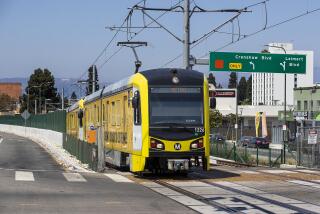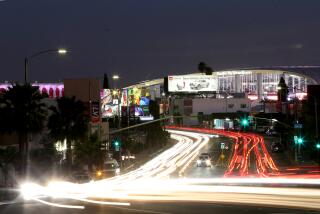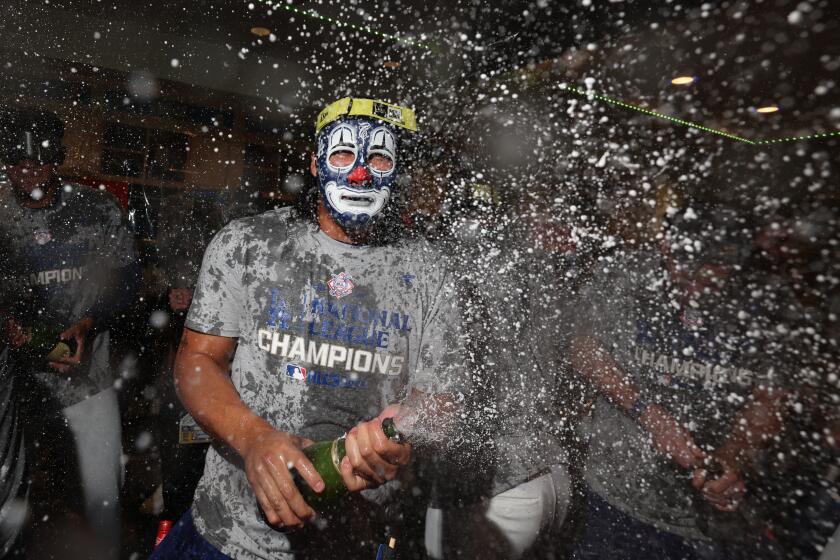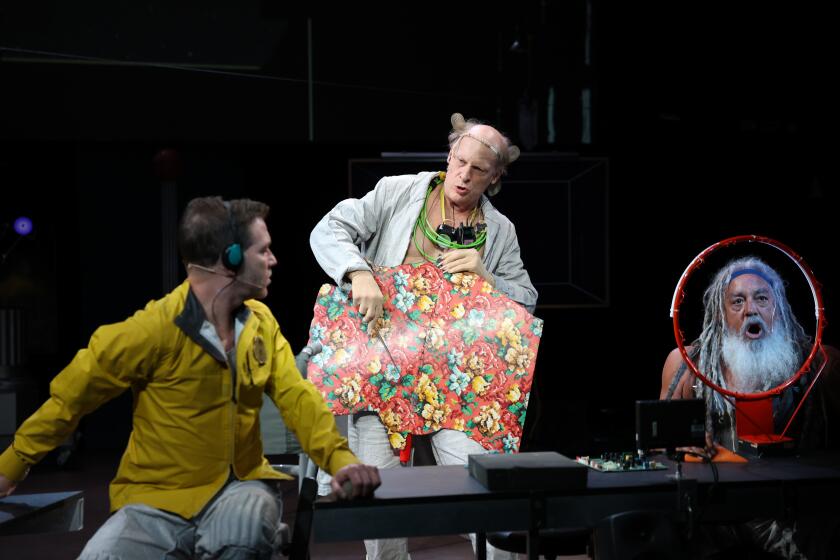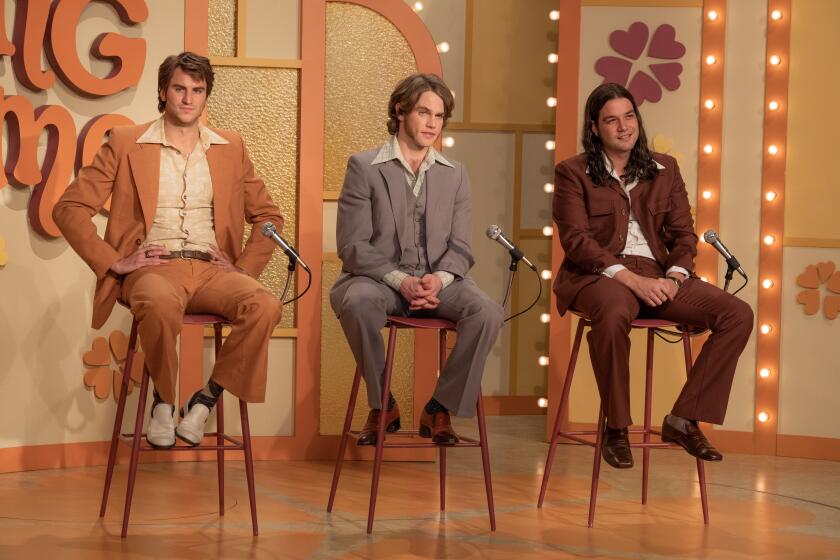Metro commits to deal ensuring subway won’t hurt Disney Hall acoustics
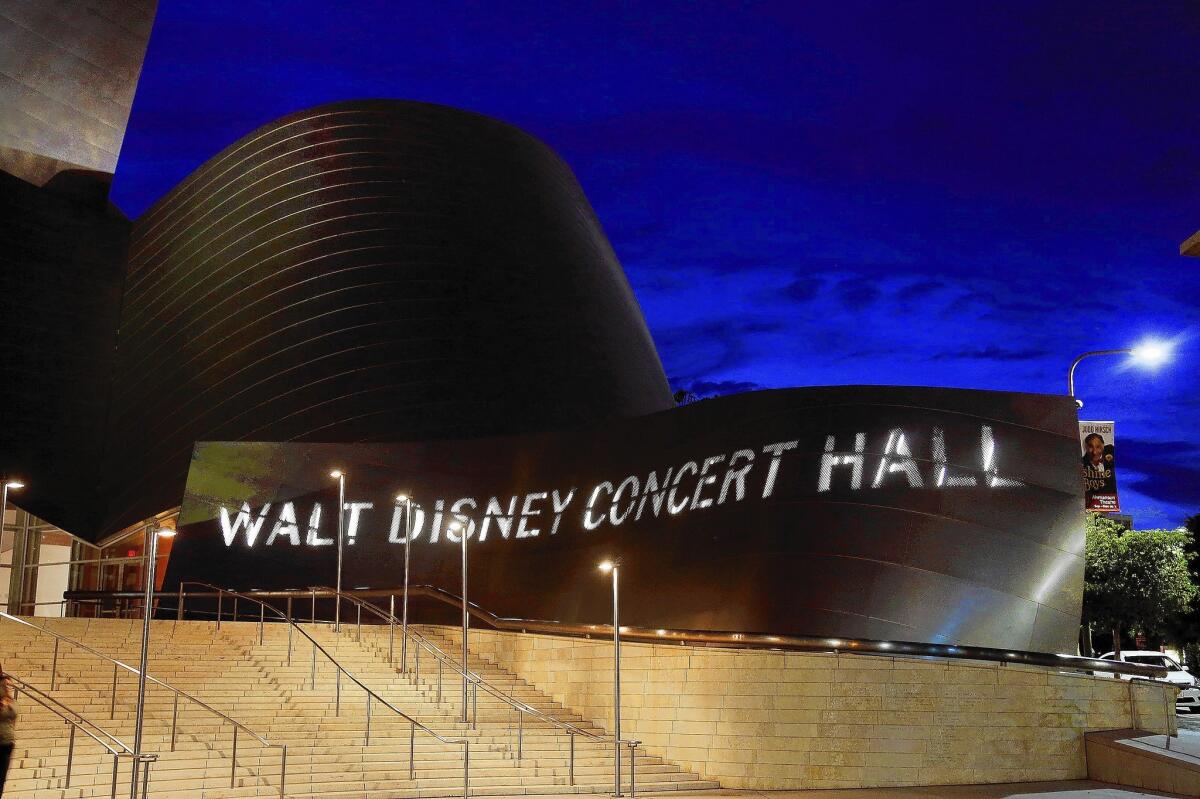
The builders of a subway that will run alongside Walt Disney Concert Hall and the Colburn School of Music are promising to deploy a triple helping of the most advanced noise-suppression measures to make sure the rumble of trains under 2nd Street won’t mar audiences’ musical experience or intrude on the sound quality of recordings made in the venues.
An agreement between Disney Hall’s landlord, the Music Center, and the Los Angeles County Metropolitan Transportation Authority went into effect this week, formally committing Metro to procedures to ensure that trains running through perhaps the most sensitive stretch of its 1.9-mile, $1-billion downtown Regional Connector Project won’t add audible vibrations.
The agreement sets out a process for what will happen if those preventive measures fail — with a Music Center lawsuit to collect damages the worst-case scenario.
But Metro and Music Center officials say they’re confident that the precautions will allow subways to run silent and run deep (135 feet below street level) in a way that won’t impinge upon Disney Hall’s acclaimed acoustics.
“These are wonderful L.A. places, and we’re not going to do anything to undermine them,” said Art Leahy, Metro’s chief executive, reiterating a promise he first made more than a year ago, when Disney Hall architect Frank Gehry and others said the results of initial sound tests were worrisome.
“We don’t think we’ll have a problem,” Leahy said, “but if we do we’ll have mechanisms [under the new agreement] to resolve it in an amicable fashion.”
The danger is not from the typical screeches and loud rumbling noises. The subway, expected to begin running in 2020, will be too deep for those sounds to register in the concert venues.
The threat is vibrations created when metal train wheels pass over metal tracks. Strong vibrations could send energy waves through the ground and into the concert venues, emerging as a low-frequency rumble in the halls.
Bryan Pennington, Metro’s chief of engineering and construction, said that contractors building the subway won’t use any new technologies to accomplish that, but the transportation agency will make sure that three proven noise-reduction techniques will be pushed to their “ultimate capacities.”
He said that two of the main lines of defense are rubber padding beneath the railroad beds that support the subway tracks, and rubber insulation installed in metal fasteners that connect tracks to the railroad bed. Pennington said that typically one or the other is deployed to prevent noise problems. Metro will install both in the tracks running past Disney Hall and the Colburn School.
Pennington said that Metro’s engineering and construction contractors will be asked to find the optimal kind of rubber to use in the noise abatement padding and insulation.
Additionally, he said, the concrete slabs into which tracks are laid will be stiffened as much as possible — another way of making sure vibrations from the tracks won’t travel.
Gehry and Yasuhisa Toyota, Disney Hall’s acoustician, could not be reached Tuesday. Deborah Borda, president of Disney Hall’s primary tenant, the Los Angeles Philharmonic, responded in a written statement: “We are pleased that the MTA is working towards preserving our city’s great treasure, and trust that they will remain absolutely committed to the protection of this acoustical gem. It is imperative we remain vigilant.”
Howard Sherman, the Music Center’s chief operating officer, said that all of Disney Hall’s tenants, including the Los Angeles Philharmonic, the Los Angeles Master Chorale and the REDCAT theater, were involved in the noise discussions over the past year. He praised Metro for strong cooperation; Pennington said the new agreement’s noise abatement goals are now codified in Metro’s contracts with the subway’s designers and builders — construction companies Skanska, based in Sweden, and Traylor Bros. of Evansville, Ind., and the Hatch Mott MacDonald engineering and design firm.
Pennington said that he couldn’t estimate how much the special measures to prevent subway noise at 2nd and Grand will cost — except that it’s built into the overall contract rather than an added-on cost. “We haven’t looked at this as a cost issue,” he said. “We looked at it as what needs to be done to protect such an important element of our community.”
The tests at the Colburn School that raised concerns about subway noise were not a simulation of how much noise the subway vibrations are expected to produce, but an attempt to establish how quiet they need to be to coexist peacefully with the musical venues at 2nd and Grand.
Sherman said that talks with Metro led to a new test last September. Metro and the Music Center each engaged their own experts, who separately set up their equipment to determine just how quiet Disney Hall is when there’s nothing gong on.
The results were consistent and established that the average “ambient” noise in the concert hall was just under 40 decibels, and 50 decibels in Choral Hall, which is used mainly for rehearsals. Metro’s aim under the agreement is to limit subway vibrations to 20 decibels in Disney Hall — considerably quieter than what a person sitting on the stage would hear if the hall were empty and unused.
A key moment will come well before the subway line opens, when test runs without passengers begin — a part of standard subway shakedown procedures that can last six months to a year. The agreement between Metro and the Music Center calls for regularly measuring how much noise the test runs produce. Monthly tests will continue for a year after the line begins regular operations; the agreement says the Music Center can request further tests after that, but at its own expense.
Pennington said that Metro won’t wait for construction to be completed before checking how noise abatement measures are working. It will install a section of track about 20 feet long for test purposes only, near the spot likeliest to create problems for Disney Hall. Akin to a vibrating bed, it involves a machine shaking the tracks to produce vibrations with a force equal to a passing train. Metro will be able to see how well the rubber cushions, rubber-insulated fasteners, and firm concrete railroad bed squelch vibrations.
More to Read
The biggest entertainment stories
Get our big stories about Hollywood, film, television, music, arts, culture and more right in your inbox as soon as they publish.
You may occasionally receive promotional content from the Los Angeles Times.

